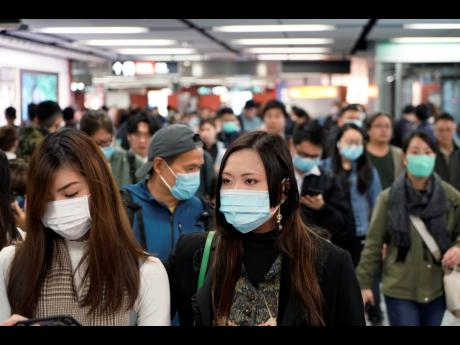Elizabeth Morgan | CARICOM’s trade with Asian countries: mainly about imports
Over the past months, I have written a series of articles on CARICOM’s trade with its trading partners – USA, Canada, United Kingdom (UK), European Union (EU), Latin America and Africa. I had also looked previously at trade discussions within the Commonwealth.
This week, I will complete this series by looking at CARICOM’s trade with Asian countries, specifically China, Japan, India and South Korea. Much of the region’s imports come from South Korea, China and Japan.
This is a tale about imports and government revenue. CARICOM countries are still quite dependent on revenue from import duties. About eight per cent of Jamaica’s revenue came from import duties in 2019. For Barbados, it was about nine per cent in 2016, about 10 per cent in Trinidad and Tobago in 2017, and for St Kitts-Nevis, it could be 29 per cent.
In my article last week on CARICOM’s foreign trade strategy and agenda, I omitted to mention the importance of import duties to government revenue, which is also influencing the region’s defensive development-oriented trade strategy.
Collectively, in 2019, CARICOM member states imported US$7.45 billion worth of goods from these four Asian countries. The goods consisted mainly of motor vehicles, boats, machinery, electrical equipment, pharmaceuticals and plastics. Most of these goods attract fairly high import duties in CARICOM countries. CARICOM exports to these Asian countries were valued at US$1.42 billion, which included mineral fuels, chemicals, alumina, wood articles, apparel and clothing, fish and crustaceans, coffee, cocoa, beverages and spirits, and essential oils.
This is a deficit for CARICOM of US$6.03 billion.
Note that there are no free trade agreements between CARICOM member states and these Asian Countries. Trading is on the basis of World Trade Organization Most Favoured Nation principles.
TRADE IN SERVICES (TOURISM)
For some years, Caribbean countries have been advised to encourage more visitors from Asia, particularly from China and Japan. This would require understanding and facilitating Asian culture, including language competence. For 2020, it was reported that Jamaica would be targeting the Asian market, especially China, Japan and India. Of course, COVID-19 has put these plans on hold.
CARICOM-ASIA COOPERATION/CONSULTATIONS
In terms of resident diplomatic representation, nine CARICOM countries are represented in Beijing, three in Tokyo, two in New Delhi, and none in Seoul. In CARICOM member states, China has resident representation in nine states, Japan in four, India in four, and South Korea in two.
CARICOM’s relationship with these four countries focuses on economic and technical cooperation. My impression is that trade, that is, CARICOM exports, has not been so high on the agenda.
CARICOM and Japan have been having consultations at ministerial and senior officials’ levels for many years, based firmly on development cooperation.
The China-Caribbean Economic and Trade Cooperation Forum was established in 2004 and has been a vehicle for deepening China-Caribbean cooperation. Eight CARICOM countries have now signed on to China’s ‘One Belt, One Road international cooperation initiative’.
I note that through this initiative, China hopes to have greater cooperation with the Caribbean in business, including unimpeded trade and foreign direct investment.
Advancing India-CARICOM cooperation dates to 2005, but the first India-CARICOM Joint Commission was held in Georgetown, Guyana, in 2015. There have been two India-CARICOM ministerial meetings on the margins of the UN General Assembly in New York. At the same venue in 2019, the first India-CARICOM Leaders’ Summit was held. The aim again is to strengthen economic cooperation.
The inaugural Korea-CARICOM High-Level Meeting was held in Montego Bay, Jamaica, in February 2017. A CARICOM-Korea Consultation and Cooperation Mechanism was actually initiated in 2006. Korea has continued to host an annual High-Level Forum on Korea-Caribbean Partnership to promote economic cooperation.
These countries are now cooperating with the Caribbean in an effort to contain COVID-19.
Combined, China, India, Japan and Korea have a population of about three billion people. China and India together have 2.9 billion. These are indeed markets for CARICOM to further explore but there is still work to be done in understanding the politics and cultures and in meeting their market requirements. At home, in CARICOM, there is work to be done on the supply side and on the trade strategy.
Geopolitics, though, could be intervening in these relationships, given the hegemonic competition between China and the USA which is affecting Latin America and the Caribbean and influencing decisions in the region. Taking note of an editorial in The Gleaner of June 21, ‘Offer CARICOM’s good offices to India and China’, on the India-China border dispute, I would think that CARICOM wants to remain on the periphery of this situation, leaving it in the United Nations.
I do think that CARICOM member states need to tread cautiously and be more perceptive in their foreign relations considering that, in reality, they are very small states trying these days, more than ever, to secure limited economic and technical support from multiple sources, all of whom have their own agendas.
Elizabeth Morgan is a specialist in international trade policy and international politics. Email feedback to columns@gleanerjm.com

